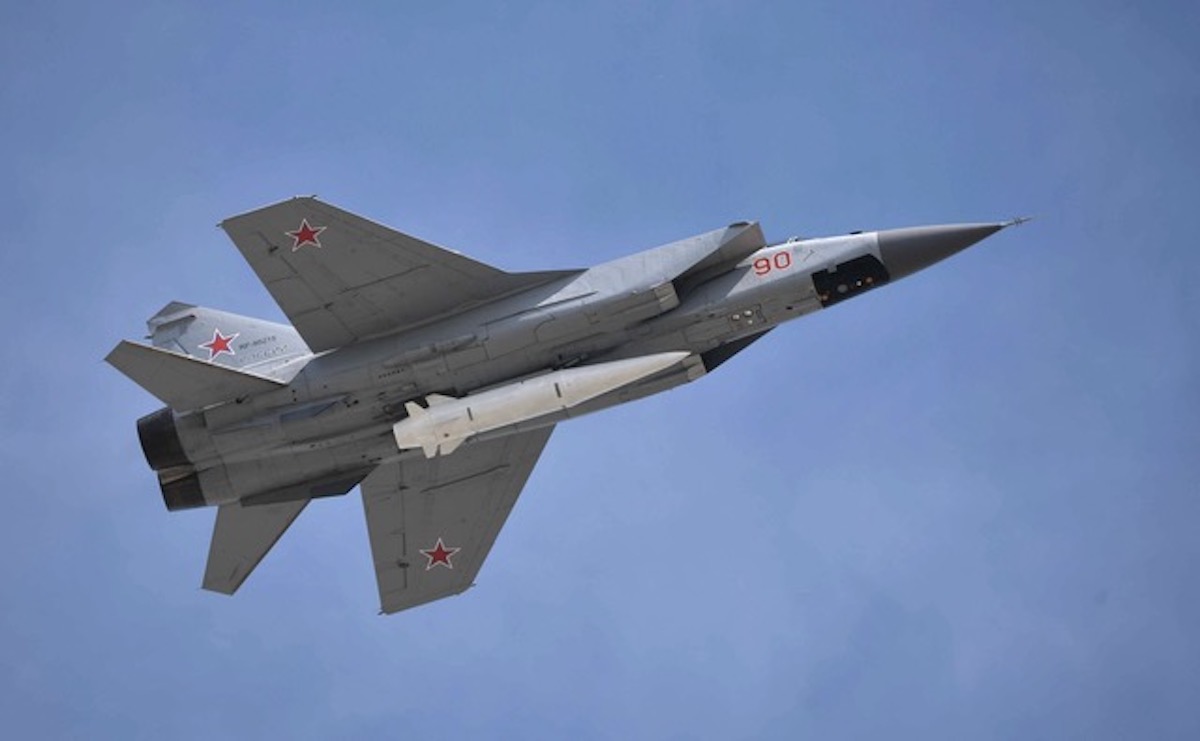By Scott Graber
Almost every day a Marine Corps jet — the F-35 Lightning — passes over our heads here in Beaufort. Some below may know the $100 million cost of this jet; others may know that the helmet itself is a $400,000 add-on. But few know the capability or the geopolitical role that comes with this remarkable weapon.
The F-35 is a single-engine, single-seat stealth fighter with a combat range of 770 miles and a maximum speed of 800 mph. It carries air to air and air to ground missiles; as well as laser guided bombs.
But the real story here is the electronic warfare system that allows multiple targeting, the ability to detect and jam hostile radar and take countermeasures; and six infrared cameras giving the pilot a “cohesive image of the battle space.”
The F-35’s “sensor suite” has an enormous advantage over other legacy aircraft like the F-18. Additionally the F-35 gets regularly updated software showing changes in hostile radar systems and the latest data on Russian fighter radar, all of which gives our pilot a better view — a view projected on the visor of his expensive helmet — of the threats he or she is flying into.
It is this software that the UK, Italy, Norway, Romania and Germany covet. But at the moment, the European countries that own this jet are worried about the cozy relationship between Vladimir Putin and Donald Trump; worried about the deliberate interruption of U.S. gathered intelligence that we share with Ukraine; worried that future F-35 software (intelligence) updates could be withheld.
Three versions
The F-35 comes in three versions. The F-35A was built for the Air Force and lands on long, well-maintained runways. The F-35B is the short-take-off-vertical-landing variant favored by the Marines. The third version, the F-35C, is the “carrier-capable” version and, obviously, is the Navy’s choice.
In February of this year, the Marine Corps announced it plans to “double its buy of the carrier borne F-35C and scale back its buy of the short-take-off-vertical-landing F-35B,” according to Defense One.
Defense One is an internet news organization that covers U.S. defense and national security, including politics and technology.
Although the Marines Corps still intends to buy a total of 420 F-35s; it will now buy 140 carrier-based jets rather than the 67 they had previously planned to order.
This decision comes as a surprise because several years ago the Marines Corps announced plans to reorganize itself around smaller units capable of quick deployment to, say, the South China Sea or the Gulf of Aqaba.
In this small unit mode they planned to “disperse the aircraft among austere forward deployed bases with shelter and concealment to enhance survivability. …” These “dispersed and concealed aircraft” would be the short-takeoff-and-vertical landing F-35B.
Force Design 2030
The small, austere, dispersed role was detailed in a Marine Corps study called Force Design 2030 that was endorsed by the then-Commandant, General David Berger, in 2020. Among other things, Force Design called for the elimination of Marine Corps armor and artillery — these would be provided by the U.S. Army — and Berger expressed concerns about the cost and vulnerabilities of the F-35.
There was an immediate backlash from a host of retired Marine Corps generals who lobbied against the sweeping changes outlined Force Design 2030.
One of the critics, Lt. Col. Gary Anderson, USMC retired, recently wrote of these new, smaller units,
“It’s operational assumption is that the small groups of Marines known as Stand-in-Forces (SIF) can operate from hundreds of isolated islets and shoals in China’s First Island chain, firing sub-sonic NEMSIS anti-ship missiles at Chinese naval combatants. The theory is they will ‘shoot and scoot’ from islet to islet before the Chinese can develop a firing solution. They would theoretically be transported by light, yet to be built, Navy Medium Landing Ships.”
Anderson continued by saying, “Most of the critics of Force Design, myself among them, believe that the SIF will not be able to scoot fast enough to avoid Chinese detection and destruction. …”
Lessons from Ukraine
As this internecine debate continued, Russia continued to grind its way through Eastern Ukraine. But that World War I-styled bloodbath did not include the capture Odesa or interrupt the flow of Ukrainian grain through the Black Sea.
The “Ukrainian military has executed an effective defense of its ports and waterway access” including retaking of Snake Island, the destruction of the Russian ship Moskva, and the destruction of a Russian landing craft loaded with unmanned drones wrote five (former and current) Naval and Marine Corps officers on the security website, “War on the Rocks.”
“Perhaps even more noteworthy than these three successes has been the outright denial of a Russian amphibious assault on Odesa.”
This group argues that the Odesa success was done without a conventional navy, but “with small forces maneuvering in littoral craft or with land-based missiles, limited aviation, and low signature (visual and electronic) unmanned aerial and sea surface systems from key maritime terrain.”
This survival of Odesa was, according to these men, proof that Force Design 2030 was a model for the reorganized Marine Corps.
Kinzhal
Now we learn, notwithstanding Odesa, that that the Marine Corps will put more F-35s aboard carriers — and fewer on “islets” or on yet-to-be-built amphibious landing ships.
All of which is happening when there are concerns about the range of the Chinese CSS shore to ship cruise missile with a range of 930 nautical miles; and the new Russian shore to ship missile (Kinzhal) with a Mig-enhanced range of 1,200 miles.
Kinzhal is of particular concern because it has hypersonic speed — 7,000 mph — and its ability to “jink.” In any conflict around China, this missile could be used against large ships, including Navy carriers, which we would presumably counter with the Patriot P3 anti-missile missile.
There are ongoing arguments about whether or not the Patriot could knock down an incoming Kinzhal. It would appear that the Patriot could successfully knock out a Kinzhal especially in the final, re-entry phase when it slows down to subsonic speed. However, if the Chinese launch a whole bunch of Kinzhals there is the worry that they would overwhelm the Patriot batteries and one or more would get through.
But whatever the outcome in the Kinzhal-versus-Patriot debate, the long ranges of both the Russian and Chinese anti-ship missiles effectively push our large $16 billion dollar carriers at least a 1,000 miles offshore — which is beyond the combat range of the F-35, meaning the attacking F-35s will have to be refueled in flight to complete their mission.
The problem with the refueling is that the MQ-25 Stingray is not yet deployed with the fleet, although this unmanned, stealthy, refueling drone is slated for carrier trials in 2026.
There is also growing concern about deployment of the short-take-off-and-vertical landing F-35B in the “expeditionary role” without the huge fuel and logistical support it would have aboard a carrier. There is an argument that the F-35B can’t be properly repaired or maintained in the middle of the South China Sea.
And then there is the U.S. Army.
The Army wants piece of the action
In the May 5 edition of The Wall Street Journal, General Ronald Clark said that the U.S. Army “has created agile new units to operate on front-line territories. In a conflict, the idea would be for these forces to disperse, hit Chinese targets from land, collect valuable battlespace information and create an opening for U.S. air and naval forces.”
These “agile new units” sound a lot like what the Marines are doing with their own austere, temporary, forward-deployed Marine Littoral Regiments.
It appears that the U.S. Army, long anchored in South Korea to check mate North Korea, wants a piece of the action in the South China Sea. The Army, seeing the Administration’s laser-like focus on China, doesn’t want to miss out.
The Marine Corps has long been the target of those who say it duplicates what the Army, Navy and Air Force bring to the “battlespace.”
This criticism began in the 1950s With Eisenhower and Truman voicing their reservations. But Force Design 2030 carves out a new, unique mission in what is called the “littoral”
Force Design 2030 advocates the use of unmanned drones saying that in the future, 40% of the Marine air force would be unmanned.
But the Marines have been slow to take up these unmanned weapons having a combat range that is greater than the F-35C — especially the Valkyrie which comes in a shipping container and can be launched without a runway.
In the short term the Marines will have to use the F-35 either in the “carrier” mode or the “expeditionary” mode, and right at the moment, General Eric Smith — the current Commandant — seems to have the ear of the President.
When the Commandant was asked about Force Design he replied, “So we’re on track to meet our force design. We are standing up MLRs, Marine Littoral Regiments. We’re constantly looking to determine how many we need, how many of them and where they will be positioned. 4th MLR at Okinawa, 3rd MLR out of Hawaii. We’re constantly looking at adjusting our MLRs and making sure they are executing what we designed them to do which is to be low-signature, highly mobile, long-range strike regimes that have the ability to sense, to make sense and to take action before action needs to be taken.”
Scott Graber is a lawyer, novelist, veteran columnist and longtime resident of Port Royal. He can be reached at cscottgraber@gmail.com.








